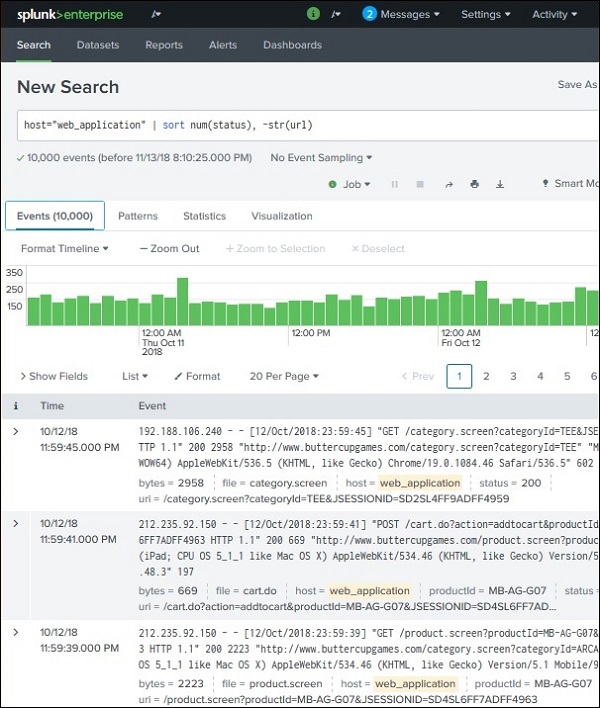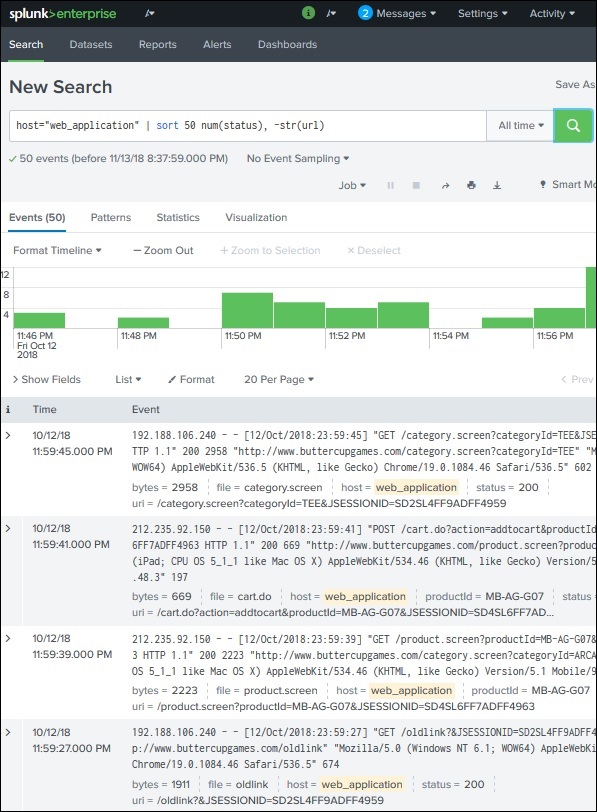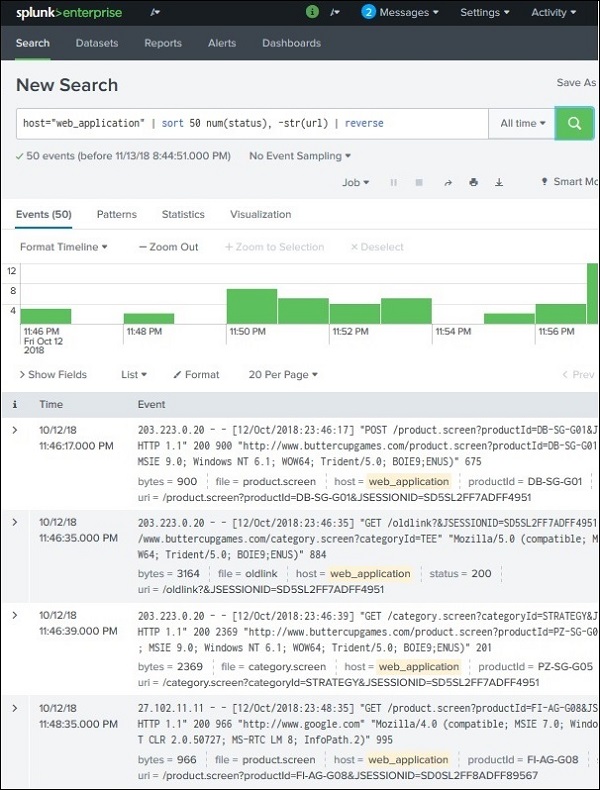
- Splunk - Home
- Splunk - Overview
- Splunk - Environment
- Splunk - Interfaces
- Splunk - Data Ingestion
- Splunk - Source Types
- Splunk - Basic Searching
- Splunk - Field Searching
- Splunk - Time Range Search
- Splunk - Sharing and Exporting
- Splunk - Search Language
- Splunk - Search Optimization
- Splunk - Transforming commands
- Splunk - Reports
- Splunk - Dashboards
- Splunk - Pivot & Datasets
- Splunk - Lookups
- Splunk - Schedules and Alerts
- Splunk - Knowledge Management
- Splunk - Subseraching
- Splunk - Search Macros
- Splunk - Event Types
- Splunk - Basic Chart
- Splunk - Overlay chart
- Splunk - Sparklines
- Splunk - Managing Indexes
- Splunk - Calculated Fields
- Splunk - Tags
- Splunk - Apps
- Splunk - Removing Data
- Splunk - Custom Chart
- Splunk - Monitoring Files
- Splunk - Sort Command
- Splunk - Top Command
- Splunk - Stats Command
- Splunk Useful Resources
- Splunk - Quick Guide
- Splunk - Useful Resources
- Splunk - Discussion
Splunk - Sort Command
The sort command sorts all the results by specified fields. The missing fields are treated as having the smallest or largest possible value of that field if the order is descending or ascending, respectively. If the first argument to the sort command is a number, then at most that many results are returned, in order. If no number is specified, the default limit of 10000 is used. If the number 0 is specified, all of the results are returned.
Sorting By Field Types
We can assign specific data type for the fields being searched. The existing data type in the Splunk dataset may be different than the data type we enforce in the search query. In the below example, we sort the status field as numeric in ascending order. Also, the field named url is searched as a string and the negative sign indicates descending order of sorting.

Sorting up to a Limit
We can also specify the number of results that will be sorted instead of the entire search result. The below search result shows the sorting of only 50 events with status as ascending and url as descending.

Using Reverse
We can toggle the result of an entire search query by using the reverse clause. It is useful to use the existing query without altering and reversing the sort result as and when needed.
